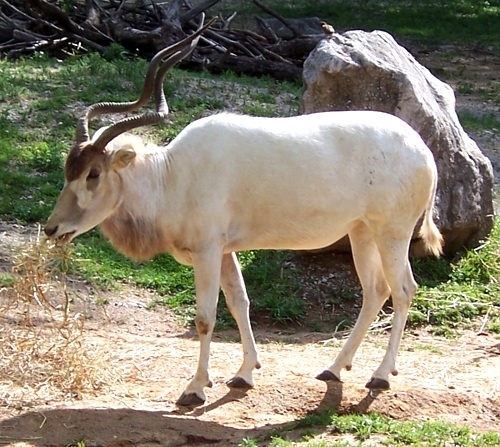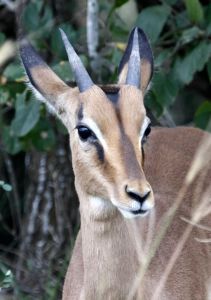Prairie-chicken
The Greater Prairie-chicken is a short, medium sized Grouse, which measures around 18 inches in length. In adults, there is a very distinct bar pattern on the entire body and wings, with a dark brown to tan undercoating.
On the cheeks, throats, and the area between the eyes and bill they are a light tan color. They have short, black bills and are completely feathered to their toes. It is a bit difficult to distinguish between male and female, except in the spring, when males are in display.
At this time, males raise the pinnae feathers on the back of their necks, which are quite large, and colored black and buff.

http://en.wikipedia.org/wiki/Greater_Prairie Chicken
When courting, these feathers are raised vertically above the male’s head while he inflates a throat sac with a bright orange-yellow color and shows his eyebrows which are colored much the same.
Mating displays occur in the spring, and are centered around a communal sight, called a Lek As many as 70 males may gather, but the average is between 10 to 15, with small groups of females often being present nearby.
The display begins before dawn and may last for three to four hours. This ritual includes strutting shaking of their wings, fanning tail feathers inflating the air sacks located on the neck and raising the Pinnae feathers.
Along with this, the emit a low booming sound able to be heard up to a distance of two miles. These birds will also become very aggressive towards other males, often jumping into the air and hitting each other with wings, feet and bill, and can often end in injury or death for the loser.
Males older than 1 ½ years have a much greater success rate in holding their territories. Younger males usually visit several leks in the attempt to establish a breeding teritory.
The dominant male on a led has the greatest success in breeding. Often only one or two males will breed 70 to 90 percent of the females, and the breeding usually occurs on the Lek.
The females generally make nest within on to 2 miles from the Lek itself, in thick clumps of grass that cover the eggs from both the air and the ground.
It is usually lined with dry grass, twigs, and feathers. The females incubate the eggs alone, and after hatching, the chicks are able to feed themselves immediately, though they spend about half of the day for the first few weeks sheltered under the hen’s wings.
Find out more about the Prairie-Chicken over at Wikipedia »


